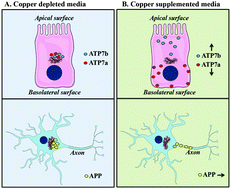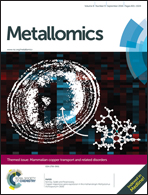Metallo-pathways to Alzheimer's disease: lessons from genetic disorders of copper trafficking
Abstract
Copper is an essential metal ion that provides catalytic function to numerous enzymes and also regulates neurotransmission and intracellular signaling. Conversely, a deficiency or excess of copper can cause chronic disease in humans. Menkes and Wilson disease are two rare heritable disorders of copper transport that are characterized by copper deficiency and copper overload, respectively. Changes to copper status are also a common feature of several neurodegenerative disorders including Alzheimer's disease (AD), Parkinson's disease (PD) and Amyotrophic lateral sclerosis (ALS). In the case of AD, which is characterized by brain copper depletion, changes in the distribution of copper has been linked with various aspects of the disease process; protein aggregation, defective protein degradation, oxidative stress, inflammation and mitochondrial dysfunction. Although AD is a multifactorial disease that is likely caused by a breakdown in multiple cellular pathways, copper and other metal ions such as iron and zinc play a central role in many of these cellular processes. Pioneering work by researchers who have studied relatively rare copper transport diseases has shed light on potential metal ion related disease mechanisms in other forms of neurodegeneration such as AD.

- This article is part of the themed collection: Mammalian Copper Transport and Related Disorders


 Please wait while we load your content...
Please wait while we load your content...